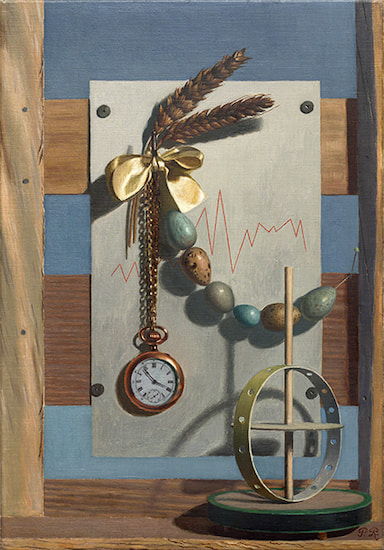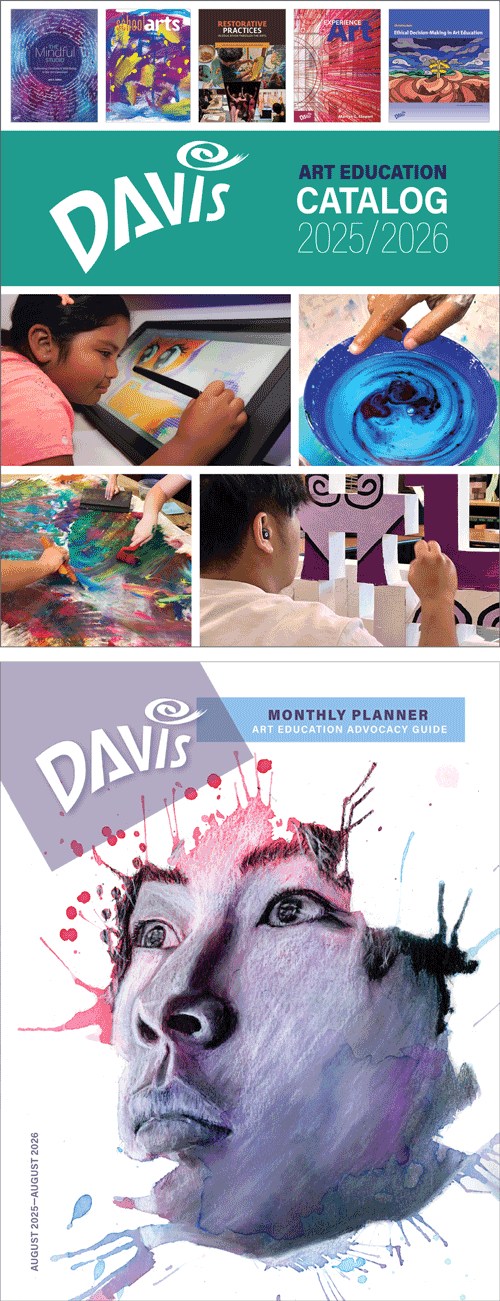Daylight Savings Time: Pierre Roy
Now you see it, now you don’t. Daylight Savings Time ends in about a month, and I’ll finally have a little light in the morning to see the bunnies in the yard at city hall. The paintings of Pierre Roy really do sum up the aesthetic theory behind Surrealism in his combination of forms that do not necessarily usually go together, but for Roy were highly symbolic. His works are the essence of what the Surrealist guru André Breton (1896–1966) defined as expressing inner vision without the “constraints of reason, morals, or aesthetics.”
 |
| Pierre Roy (1880-1950, France), Daylight Savings Time, 1929. Oil on canvas, 21 ½" x 15” (54.6 x 38.1 cm). The Museum of Modern Art, New York. © 2025 Artists Rights Society (ARS), New York. (MOMA-P3204rbars) |
Daylight Savings Time, known as French Summer Time, was observed in France between March and October between 1911 and 1940. It was presumably adapted to allow farmers an extra hour of sunlight in order to tend to crops. The region around Nantes in the Loire Valley, where Roy was born, for generations has been a major source of vegetables in France. Roy alludes to this with the omnipresent wheat sheaves in this painting, while the watch may indicate the issue of time, although the combination with the other elements does not seem to have anything to do with the title.
After World War I (1914–1918) in Europe, many artists sought new forms of expression that rejected the physical world of "logic" and "reason" that they felt was responsible for the madness of that war. These artists believed that an artist's imagination and dreams were as important or more important than what most people considered reality. This was in tune with German philosopher Friedrich Nietszche's (1844–1900) philosophy about the lyric significance of everyday objects and the superiority of a free spirit.
The Dada movement of ca. 1919–1922 sought to redefine what could be considered valid subject matter in art. The nonrational was preferred to the logical. By 1922, some artists accused Dada of becoming institutionalized of codified. Surrealism had its beginnings in these rebels. According to André Breton (1896–1976) who wrote the Surrealist manifesto in 1924, the Surrealism movement was pure "psychic automatism", art created by intuition rather than by conscious thought. Surrealists created art based on fantasy, dreams, and random thoughts, all unfettered by any traditional aesthetics, reason, or morals.
Surrealism was not characterized by a single stylistic approach. What tied the many stylistic variations together was an adherence to the belief in creating without preconceived ideas, and a rejection of the rational physical world. Therefore, Surrealism runs the gamut from extreme realism, to over all non-objective abstraction characterized by organic shapes and forms that resemble yet do not duplicate those in nature.
Roy was born in Nantes, France. As a boy he was a fan of the science fiction of author Jules Verne (1828–1905), and also was regaled with stories of exotic lands by his grandfather, all of which probably influenced his mature style later in life. Working in an architectural office taught him precise draftsmanship, and then he moved to Paris in 1904. There he studied at the School of Fine Arts, Academy Julian, and the School of Decorative Arts. His early paintings were in the Neo-Impressionist and Fauvism styles.
Around 1920, Roy discovered Surrealism in the Metaphysical Fantasy paintings of Giorgio de Chirico (1883–1978), and his works slowly moved towards Surrealism. He took part in the first Surrealist exhibition in Paris in 1925, and in several of their other shows. His involvement with the group was primarily between 1925 and 1928. The intention of Roy’s work, particularly after 1930, was to reconcile Surrealism with an emphasis on logical analysis and a mechanistic interpretation of nature. In a 1967 retrospective of his work, he was reintroduced as a forerunner to Surrealist René Magritte (1898-1967) without the “depth or wealth of invention.”
Correlations to Davis programs: Explorations in Art 2E grade 1, 6.1; Explorations in Art 2E, grade 2, 4.5; Explorations in Art 2E grade 3, 2.9; Explorations in Art 2E grade 4, 6.8; Explorations in Art 2E grade 5, 2.2, 6.5 Explorations in Art 2E grade 6, 1.8, A Community Connection 2E, 9.1; A Global Pursuit 2E, 8.4; A Personal Journey 2E, 7.4; Experience Art 2.2, 3.2; The Visual Experience 3E, 16.6; Discovering Art History 4e 14.4

Comments